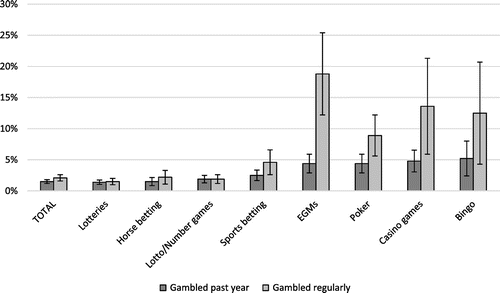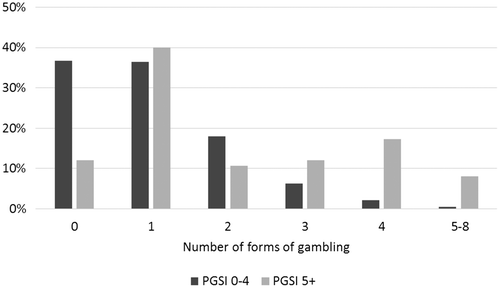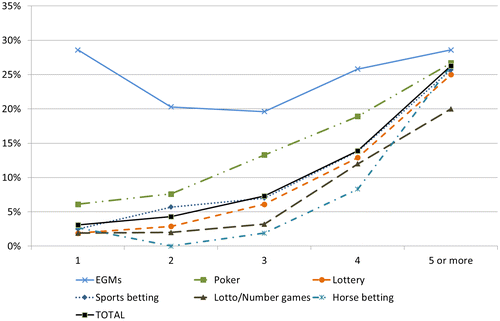Figures & data
Figure 1. Percentage of problem gamblers among past-year and regular gamblers in different gambling forms.

Table 1. Gambling involvement in major gambling forms.
Figure 2. Estimated proportion of PGSI 5+ participants in relation to number of forms of gambling (yearly participation).

Figure 3. Percentage of non-problem and problem gamblers in relation to involvement in number of forms of gambling, regular participation.


